Posts
Rudolf Adis Final Project Annotated Bibliography
Guisepi, R. (Ed.). (n.d.). GREEK AND ROMAN ART. Retrieved December 7, 2018, from http://history-world.org/arthist.htm
This article discusses both the similarities and differences that exist between Ancient Greek and Ancient Roman art. Furthermore, the article also discusses specific artworks from both cultures in order to specify the comparisons and contrasts. For example, one statement made in the article shines light on the Ancient Greeks’ use of marble for their sculptures, as well as their focus on the spirituality and deeper human meaning of their artworks. The Ancient Romans, however, were described as lacking much originality, but they made up for it by improvising and also innovating their artworks (for which they used a sizeable amount of Greek art to model after).
Crawford, N. (2018, September 19). What Are the Differences Between Greek Art & Roman Art? Retrieved December 7, 2018, from https://ourpastimes.com/what-are-the-differences-between-greek-art-roman-art-12279193.html
This article is similar to the previous article in that it also explains both the similarities and the differences in the artwork of the Ancient Greeks and Ancient Romans. For instance, in this article, it is stated that the Ancient Greeks many times represented gods in their work, so as to express their idealistic view on raw physical looks and beauty. The Ancient Romans, on the other hand, used their artwork in order to demonstrate a different main idea, decoration/ornamentation. Furthermore, this article touches on a subject not mentioned in the previous article: the ancient Greeks’ paintings were very limited, whilst the ancient Romans had the upper-hand in painting.
Ambler, J. L. (n.d.). An introduction to ancient Roman architecture. Retrieved December 7, 2018, from https://smarthistory.org/roman-architecture/
In this online source, the main topic focused on was the architecture in Ancient Rome, as well as the differences in architecture that exist between the Ancient Romans and Ancient Greeks. Namely, the architecture of the ancient Greeks revolved around the post-and-lintel system. The architecture of the ancient Romans, however, differed in that it focused mostly on concrete, arches, and vaulting. Along with this, the article describes a number of famed ancient Roman architects, as well as the architectural pattern that most Roman cities were focused on: the forum, which is a large open plaza that is surrounded by important buildings, as per the online source.
Greek and Roman Art. (n.d.). Retrieved December 7, 2018, from https://www.metmuseum.org/about-the-met/curatorial-departments/greek-and-roman-art
In this online source, it is not so much wording that helps distinguish the source topic as it is the images of ancient Greek and Roman paintings that do. The reason why this is such a key online source is because its organization and display of artworks that correlate with their respective culture (either Ancient Greek or Ancient Roman) is clear enough to allow the reader to self-evaluate the distinctions between the artworks of the ancient Greeks and the ancient Romans.
Hemingway, C. (2003, October). Architecture in Ancient Greece. Retrieved December 7, 2018, from https://www.metmuseum.org/toah/hd/grarc/hd_grarc.htm
Finally, in this online source, the architecture of ancient Greece in specific is exemplified and expanded upon. This makes it easy to intake the information, and differ it from architectural information on ancient Rome, as seen in the aforementioned articles. In short, two principal order are stated as having entirely influenced the ancient Greek architecture that still remains wildly ubiquitous even to this day. These two principal orders are the Doric and the Ionic orders, which both differ in their general ideas of architectural design, such as the frieze, the cornice, the architrave, and etc.
Final project Walking Tour
What I wanted to explore with this final project is the way that rulers were represented by their people through art more specifically sculptures. How differently they were carved, for example, I wanted to see how their facial features differed from region to region. I want to see if the body types are idealistic and unrealistic or if they are plausible and reasonable.
Roman

The Romans never really liked to hold back in their sculptures. They made sure they got the Rulers imperfections in their sculptures because they wanted to be realistic and make sure that people know exactly what their ruler looked like. An example is the piece above is a Bronze statue of the emperor Trebonianus Gallus they didn’t make him look as good as possible they gave him a gut and they made sure to carve in the wrinkles on the face of Trebonianus. Romans were influenced by Greek and Egyptian art when they took over their land. Roman art is usually seen as having less worth to the Greek pieces because the Greek art was first and it looks more ideal.
French

The French enjoyed making their leaders look strong in sculptures. Something that I have noticed when looking over the sculptures is that the leaders are always dressed up in a dignified way. This is a good example of how French leaders were represented. This is Louis XV and the king is shown wearing a suit of armor, a mantle thrown over his left shoulder, with the plaque and the ribbon of the Holy Spirit and the cordon of the Golden Fleece very high-class stuff. This sculpture is also made out of white marble a material that was used by the French in a lot of their early works where they later started to use bronze to sculpt.
Egypt
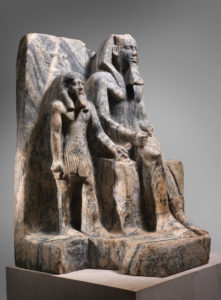
Ancient Egyptians had a very strong connection to religion they made their sculptures with deities from their times. They lived to please their gods so it made sense that they would add gods to their artwork. This has been identified as Sahure, the second ruler of Dynasty 5. Seated on a throne, the king is accompanied by a smaller male figure the local god of the Coptite nome. This deity offers the king an ankh (hieroglyph meaning “life”) with his left hand. This is a great example of Egyptian sculpting because the rulers of Egypt in these days were seen almost as gods. It would make sense that their rulers were Seen as higher than some gods and I think we don’t see a lot of sculptures like this because most other regions like to keep religion out of their sculptures and are more focused on making their leaders look good.
Greek

Greeks wanted to be perfect. The sculptures of emperors and royals from Greece usually have perfect figures. They give them 6 packs and a really lean and fit body they take away the imperfections from their faces so that they can look their best. The Greeks change everything that they can in order to make their leaders look perfect and give them this godlike aura they also used marble as it was popular to use. This example is a bit beaten up but you can see how she has no wrinkles unlike the Romans her skin is smooth and her face seems symmetrical and there is detail on her hair. This is showing the head of a Ptolemaic queen and she is really well made which sums up how Greek art is made.
Mayan
Mayan pieces of art are a lot different than anything else on this list because they weren’t really influenced by anyone else here because they were more isolated and didn’t really have contact with Europe. The material looks more like ceramics which is also unique as these other places use marble. Mayans also didn’t really care about looking good which is evident above the facial features aren’t even really even carved out with too much attention. What is shown in this sculpture is that the garments that they wear are important this is a king and his crown is fully carved out and attention to detail was very important as that is what showed dominance.
Conclusion
After looking at all these pieces It is evident that every generation influenced the next. Rulers were represented usually presented very powerful and a lot of these places tended to use marble as material to carve out of. What really connected all the early pieces is the fashion that they had. All the rulers were usually shirtless and wore nothing but their loincloth and their crowns or other pieces of importance. In conclusion, every work of art is unique however, you can see certain features being passed down from culture to culture and see the influence these cultures have had on each other.
Sources
https://www.metmuseum.org/art/collection/search/318345
https://www.metmuseum.org/toah/works-of-art/2002.66/
https://www.metmuseum.org/art/collection/search/543882
https://www.metmuseum.org/art/collection/search/198766
https://www.metmuseum.org/art/collection/search/247117
Final Project: option 2
 Loading...
Loading...
Final Project: annotate bibliography
 Loading...
Loading...
FINAL PROJECT: “The Art of Deceit”

“Art of Deceit” by Kristine Veras
In class before we spoke on the period of Roman Portraiture, and how Art wasn’t always accepted for reasons of it being viewed as deceitful or for allowing too much freedom of thought or expression, and eventually Verism, a form of realism art, started being incorporated into Art more. Art was looked down upon and instead, more realistic things such as government, philosophy etc were seen as ideal. If you look at the piece that I created, it’s a bunch of headlines surrounding some of the biggest political scandals in the background, each painted a different color to stand out not only as a whole but amongst one another so that the viewer can draw individual attention to each headline. In the foreground, here is an astronaut, the size of the entire canvas; therefore it’s relatively large compared to the headlines to also stand out. The purpose of the Astronaut being that one of the most relevant scandals, mysteries, “conspiracy theories” is surrounding whether the Moon landing was staged or not. When creating the piece I really wanted to capture the irony behind Art being unaccepted for being “Deceitful”, when really one of the largest deceits, yet one of the most present and active ones in our lives, is the government. There’s also an irony in how Art itself can be a political statement about political statements and maybe that’s why it wasn’t accepted, it was seen as a potential danger. And that is the art of deceit.
Final Essay Annotated Bibliography (Second Topic)
Heilbrunn Timeline of Art History
https://www.metmuseum.org/toah/works-of-art/18.2.4/
Heilbrunn Timeline of Art History
https://www.metmuseum.org/toah/works-of-art/05.30/
Heilbrunn Timeline of Art History
https://www.metmuseum.org/art/collection/search/198766
These 3 pieces offer history to my project. With these sources I can better understand the conditions in which these pieces were built and why they were built. It gives us explanations on who these people were and what they have done to get statues built of them. It also helps because each one of these pieces of work come from a different region so we have more pieces to compare from for our project to see differences and similarities.
Roman Portrait Sculpture: Republican through CONSTANTINE
https://www.metmuseum.org/toah/hd/ropo/hd_ropo.htm
This post gives a lesson on the importance of sculptures and it talks about how they come to fruition. This tells us about how these statues were typically made to celebrate a noted military achievement, usually in connection with an official triumph, or to commemorate some worthy political achievement, such as the drafting of a treaty. We also learn about how bad emperors usually did not get one or they got their sculptures destroyed.
Roman Egypt Essay
https://www.metmuseum.org/toah/hd/regy/hd_regy.htm
This was is really important because it ties a connection between the Roman and the Egyptian pieces of work and how they are influenced from each other. Rome’s rule over Egypt officially began with the arrival of Octavian in 30 B.C., following his defeat of Marc Antony and Cleopatra in the battle at Actium. It talks about how once Rome took over a new fascination with its ancient culture became influential. Obelisks and Egyptian-style architecture and sculpture were installed in Roman fora. This led to the changing and development of a new Egyptian style of sculptures and a new Roman style.
Final Project: The True use and Influence of Architecture Throughout Societies
From the 20th Century to modern day civilization, societies from all around the globe have constantly endured their share of hardships. For example, in the ’40s the world experienced the horrific nature of The Holocaust. After years of fighting with the Germans, the end result was an utter catastrophe. Buildings were destroyed, homes turned to ash, and millions murdered. It took decades to rebuild what was once lost, but yet the job was finished wholeheartedly. Due to architects and their projects, new buildings were built and as everything was being brought back slowly, hope was restored to the people. After WWII, comes the rise of the Cold War. As a result of the Cold War, economies plummeted and certain societies were destroyed. For example, the society of Yugoslavia was in shambles. However, the Utopian project was created to rebuild through architecture and restore the light in the souls of the people. Nothing more is desired than to live harmoniously amongst each other with the eradication of violence. That is what architecture has and is continuously trying to provide society with. In its purest form, architecture provides a certain influence on society through its intersection with individualistic creativity. This concept of art is used worldwide in an ongoing attempt to create drastic changes in modern civilization and in the minds of the general public. Through the architectural genius of Bodys Isek Kingelez “City Dreams,” the project known as “Toward a Concrete Utopia: Yugoslavia,” and from public architecture such as the fallen Twin Towers (now known as One WTC), the world is in an attempt to move towards a better future.
Bodys Isek Kingelez is a self-taught Congolese artist who decided to bring a pure fantasy into a reality. His “City Dreams” collection consists of vibrant and elaborate cities that are made from paper and cardboard (Wiesenberger). Kingelez dedicated his buildings to cities, companies, countries, civic infrastructure, and intergovernmental organizations (Wiesenberger). Much of his work actually represents the city and country in which he grew up in, as well as, future utopian communities. For example, the project known as Ville De Sete 3009 is a projection of a fictive metropolis (Wiesenberger) where doctors and police are not needed (MoMA).

Other exceptional and profoundly artistic pieces that Kingelez created was the U.N. (1995) and the Scientific Center of Hospitalisation the SIDA (1991) (MoMA). The U.N. piece was created to “attest the organization’s global peacekeeping efforts and the artist’s own sense of civic responsibility” (MoMA). It represents a peaceful future, in which nations from around the world come together to create a united society. No wars, just peace. The Scientific Center of Hospitalisation of SIDA was created in response to the spread of AIDS in his country. Kingelez himself was quite intrigued with world events and social issues (MoMA) which acted as a prime inspiration in his creations. “His work explores urgent questions around urban growth, economic inequity, how communities and societies function, and the rehabilitative power of architecture—issues that resonate profoundly today” (MoMA). In the artist’s words, he imagined “a better, more peaceful world” (MoMA). People who walk by this exhibit in the Museum of Modern Art hardly recognize the purity it brings and the hope it establishes. When I first experienced this exhibit, I was in awe. A sudden wave of serenity washed over me, and in my mind, I pictured a better future filled with peace.
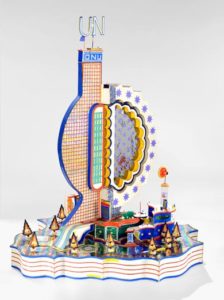
Architecture not only inspires, but it transforms the world as well. Societies have endured countless wars and total destruction, but what brings it back from the brink is the use of architecture. The Republic of Yugoslavia is a perfect example of the true use of architecture. After the Cold War, everything was in shambles. However, architects who participated in the Concrete Utopian Project from 1948-1980 “responded to contradictory demands and influences, developing a postwar architecture both in line with and distinct from the design approaches seen elsewhere in Europe and beyond” (MoMA). This project explores “themes of large-scale urbanization, technology in everyday life, consumerism, monuments and memorialization, and the global reach of Yugoslav architecture” (MoMA). Without these wonderful artistic minds, Yugoslavia would not be living up to its own potential. Some might say architecture nowadays is all about becoming the new face of a magazine (MoMA/Youtube). They wouldn’t be wrong. However, those who would say that are not entirely correct. Yes, architecture is a competition, but it is also the foundation of the future. Without architecture, the world would be archaic. It’s beautiful to see what was once destroyed, to be back up on its feet again. Citizen of Yugoslavia never would have believed that their city would be restored back to glory.

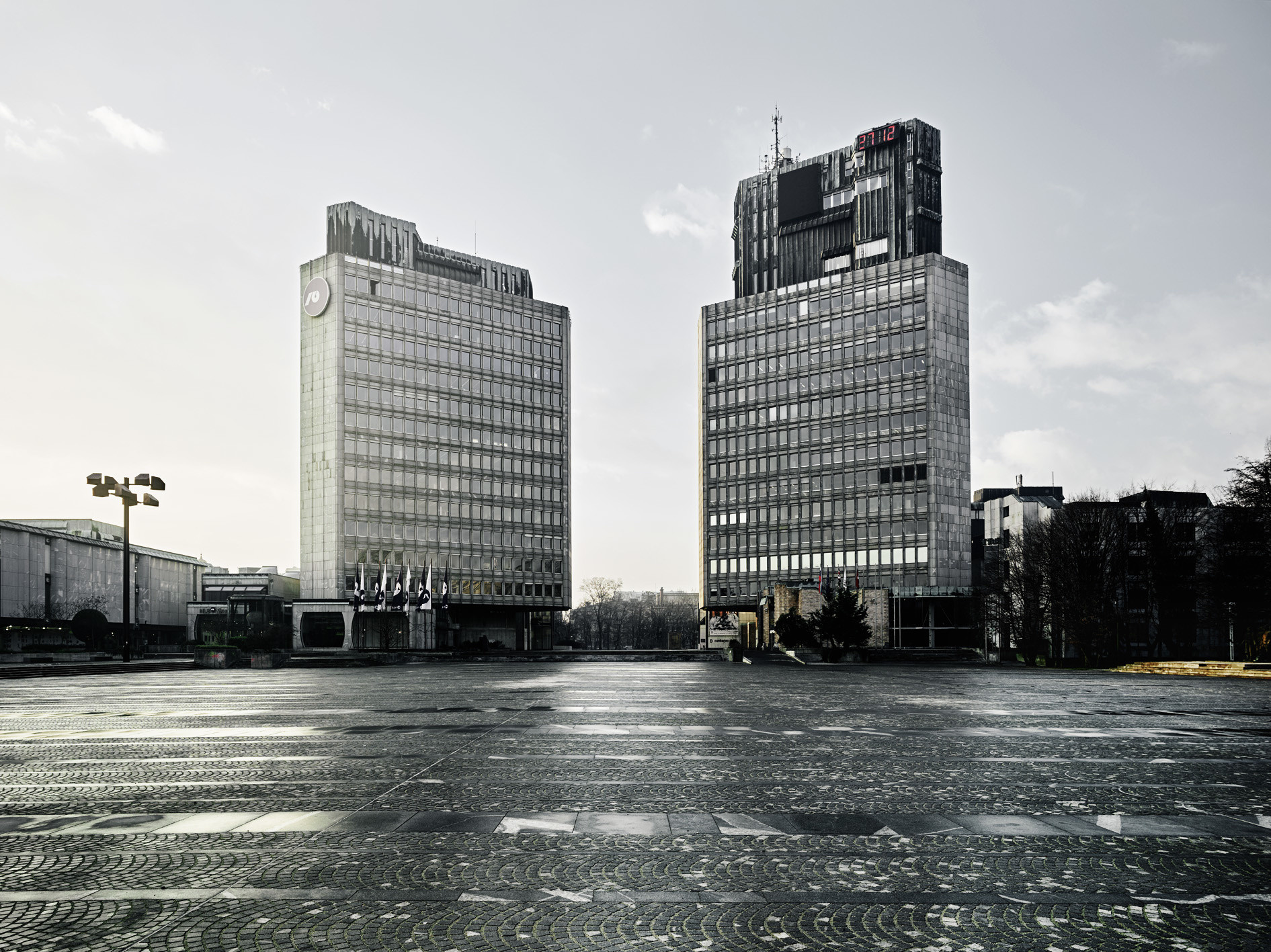
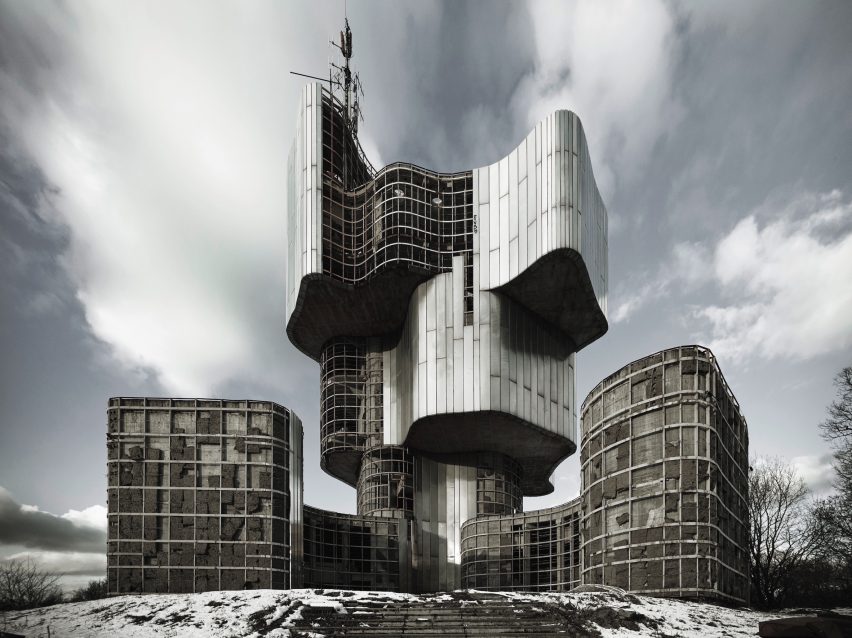
![]()
These structures represent a glowing new world. One in which everyone can enjoy and have stored in memory.
Now, one of the most prominent pieces of public architecture, in my opinion, is the fallen but never forgotten Twin Towers. On September 11, 2001, a horrific act of terrorism flew two planes into the Twin Towers in New York City. Before these towers were destroyed, the architectural brilliance that went into it is beyond anyone’s wildest dreams. “Manhattan’s World Trade Center was a triumph of human imagination and will. Completed in 1973, the towers stood at 110 stories each, accommodating 50,000 workers and 200,000 daily visitors in 10 million square feet of space” (History.com). It was New Yorks most famous tourist attraction and symbolized “America’s–steadfast devotion to progress and the future” (History.com). If someone were to visit New York, from a plane these towers could be seen. That is when someone would know they are in New York City. Some would even use these towers to orient themselves in the hustle and bustle of the city. The World Trade Center was a “concept of world peace through trade” (History.com). It was not only a symbol of the future, but it was a symbol of triumph as well. Even though the towers are gone, a new World Trade Center stands in its place. It stands mighty and strong, commemorating the fallen and showing the world that America and New York cannot be brought down. There is resiliency in the architecture of this building and hope of a new age.

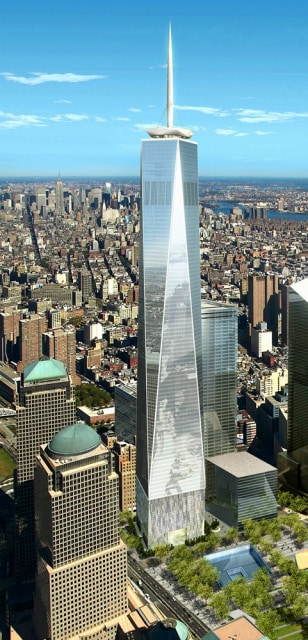
I chose architecture as my topic because it represents something unique for every individual. For one it might represent hope, for another, it could represent bravery or courage. No matter the representation, architecture affects every person differently. It’s important to understand the true nature and effect it has on society because, without this piece of creativity and art, society becomes uncultured. Through the architectural genius of Bodys Isek Kingelez “City Dreams,” the project known as “Toward a Concrete Utopia: Yugoslavia,” and from public architecture such as the fallen Twin Towers (now known as One WTC), the world is in an attempt to move towards a better future.
Bibliography
Art, The Museum of Modern, director. Toward a Concrete Utopia: Architecture in Yugoslavia, 1948-1980. YouTube, YouTube, 10 July 2018, www.youtube.com/watch?v=M2S0bBTHu-8.
“Bodys Isek Kingelez: City Dreams.” Lee Bontecou. Untitled. 1959 | MoMA, www.moma.org/calendar/exhibitions/3889?locale=en.
“Toward a Concrete Utopia: Architecture in Yugoslavia, 1948– 1980.” Lee Bontecou. Untitled. 1959 | MoMA, www.moma.org/calendar/exhibitions/3931
Wiesenberger, Robert. “Bodys Isek Kingelez: City Dreams.” Art Papers, www.artpapers.org/bodys-isek-kingelez-city-dreams/.
“World Trade Center .” History.com, A&E Television Networks, www.history.com/topics/landmarks/world-trade-center.
Final Project Outline/Background

Date:ca. 1500–1525
Culture:French
Museum: Metropolitan Museum of Art
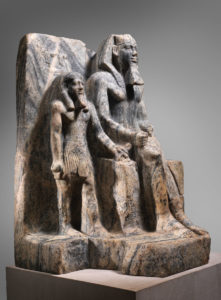
Date:ca. 2458–2446 B.C.
Geography:From Egypt
Museum: Metropolitan Museum of Art

Artist:Jean-Baptiste Lemoyne the Younger (French, Paris 1704–1778 Paris)
Date:1757
Culture:French
Museum: Metropolitan Museum of Art

Date:A.D. 251–253
Culture:Roman
Museum: Metropolitan Museum of Art

Date:ca. 1250
Geography:Made in Burgundy, France
Culture:French
Museum: Metropolitan Museum of Art
Something that is within all the artworks above is the normality of the postures and facials expressions of the subjects used to covey. These are all pieces that are of royals and I chose this because I wanted to see how different types of cultures treat their rulers and how they represent them and preserve their memory through their art.
Final Essay Annotated Bibliography (Second Topic)
Final Essay Annotated Bibliography
Topic –
Tying pieces we have gone over throughout the semester, as well as statues and works of art that I have come across from the met museum together to come to a conclusion for the overall question of if everything being produced by different artists and sculptors is in some way all related and trying to point to a larger picture.
The Met’s Heilbrunn Timeline of Art History, www.metmuseum.org/art/collection/search/247173.
The Met’s Heilbrunn Timeline of Art History, www.metmuseum.org/art/collection/search/248140.
The Met’s Heilbrunn Timeline of Art History, www.metmuseum.org/art/collection/search/251050.
These citations bring you to a more in-depth description of the photos that I gathered from going to the Met Museum. They include the statue of Eirene, the marble statue of the lion, and the bronze horse. Although at first glance these three pictures may seem to have no correlation to each other, when inserted into the grand scheme of things that will be unveiled in the entirety of my final, all will begin to come together in an eye-opening revelation of sorts
David, Ariel. “Linking the Past and the Present Through Art.” The New York Times, The New York Times, 7 Sept. 2010, www.nytimes.com/2010/09/08/arts/08iht-rartisrael.html.
This source is used to give backstory on the question I have presented. It delves into the ways that art ties in with history, and how it continues to do so. It also goes on to give examples of how many things throughout different eras are in turn connected to one another, and how they symbolize different things.
By. “The 14 Most Unintentionally Terrifying Statues in the World.” Cracked.com, www.cracked.com/article_19155_the-14-most-unintentionally-terrifying-statues-in- world.html.
Lastly, we have this source that adds a bit of flair to the already conspiracy driven essay. It goes on to explain many terrifying works of art that populate the world, and how in turn they may be related to events that have already happened, or that are in the midst of happening. Most seem to be just myth driven pieces, but others could definitely be the nail that drives every point together.



